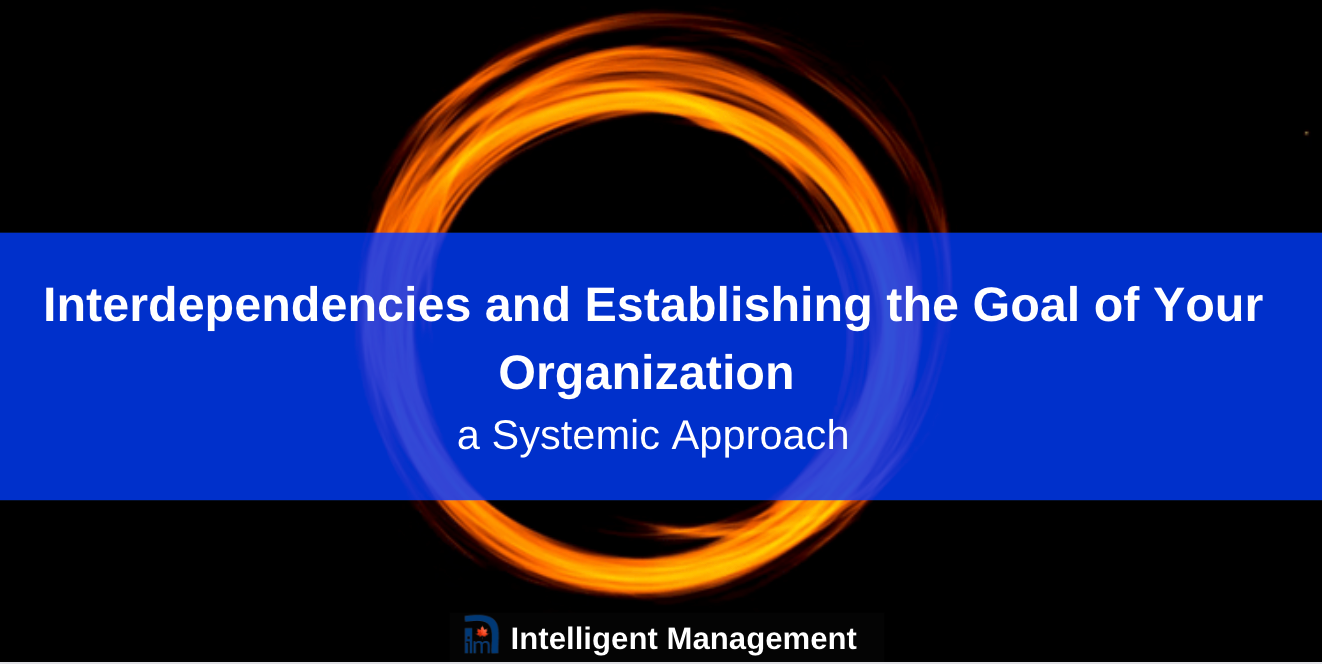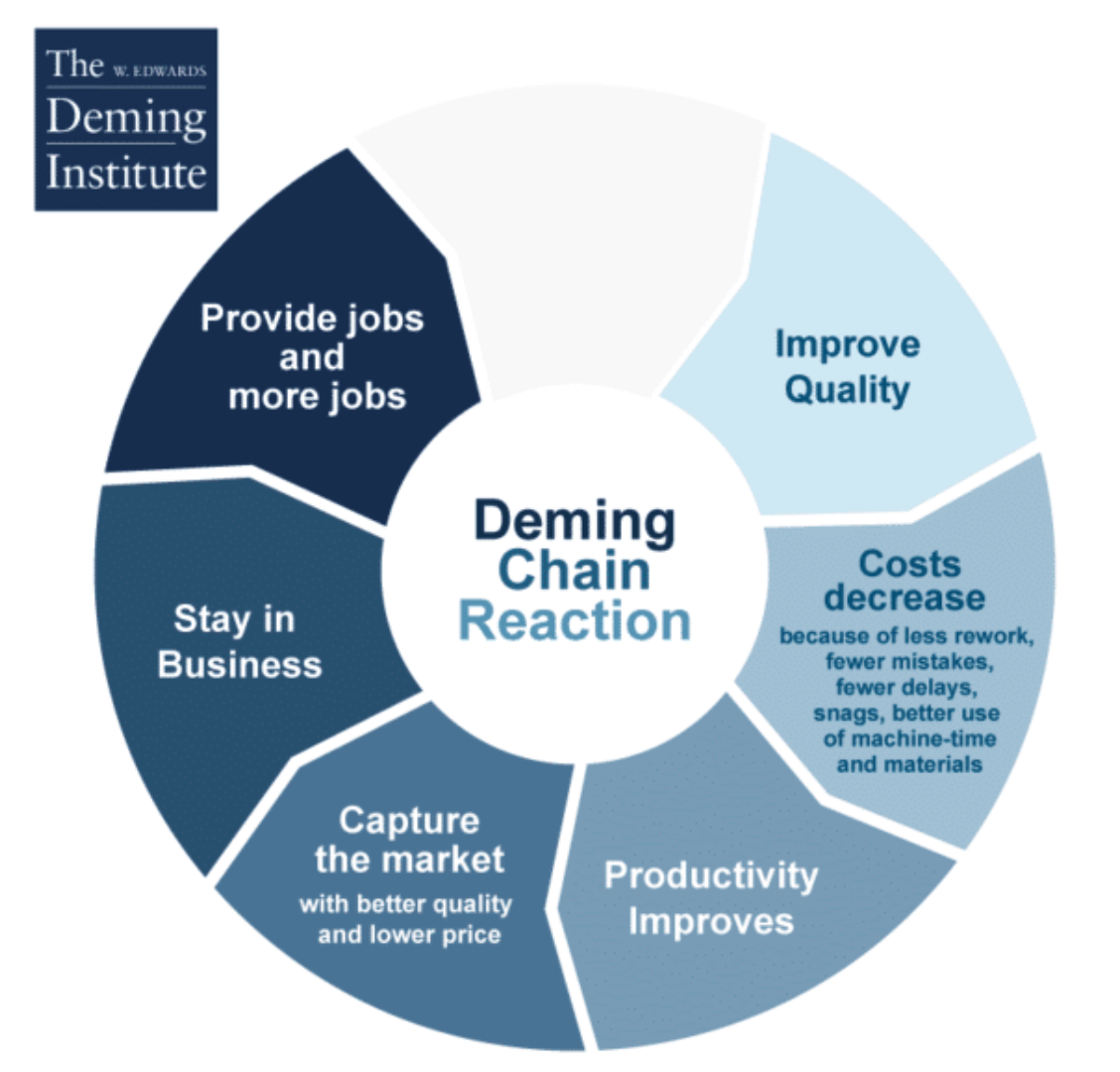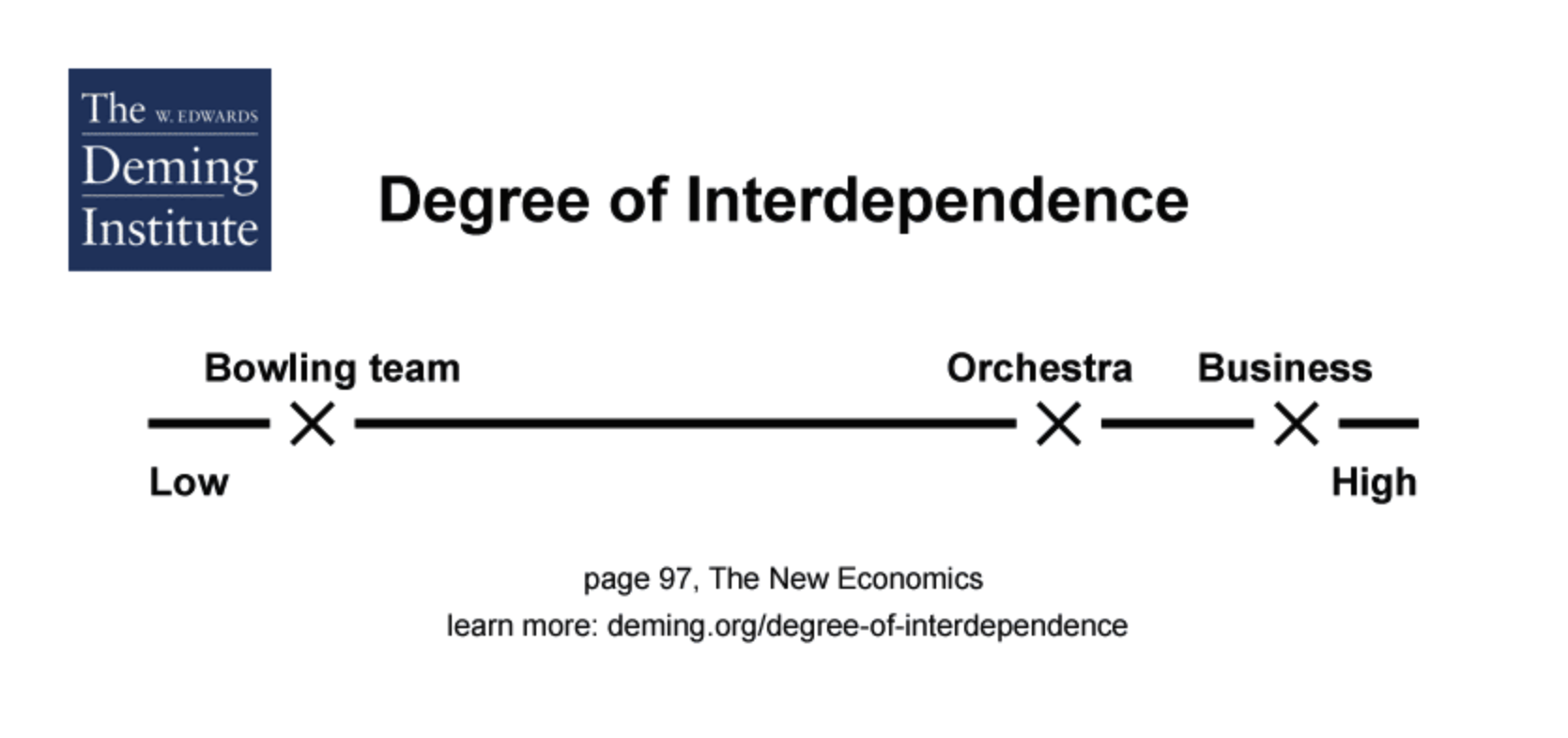
Over the summer months we are looking in detail at the essential steps to create a significant leap in the performance of your organization, based on the Ten Steps of the Decalogue Method.
The ‘‘how’’ in how we manage our organizations has to be radically transformed. Our goal must be a way of behaving and working that allows everyone to win. Management based on cooperation not competition.
If we really succeed in thinking and adopting a management approach that allows us to improve the quality of what we produce, then we can spark off the chain reaction that Deming described:
- Improve Quality
- costs decrease
- productivity improves
- capture the market
- stay in business
- provide more and more jobs

It is time for us to understand, decades after Deming’s lesson, that we are better off when we live and work as a system: a network of interdependent components, which work together to achieve the goal of the system.
What this transformation requires is a true revolution in our way of thinking and behaving. But we cannot get away with simply changing our outward behavior or our corporate image. We are talking about a change that deeply affects the way each one of us sees the world.
In every organization we face the problem of transforming the strategies we have defined into a successful operational plan. The reason why many new initiatives fail is that they conflict with our view of reality. These conflicts are often generated by the hidden assumptions that lie behind our way of thinking. For this reason, if we want to change our approach to managing organizations we must bring these assumptions to the surface.
If we can come to understand the existence of these ‘‘mental models’’ (see Peter Senge’s Fifth Discipline’) and we decide to challenge them, we will have acquired an essential tool for reacting to the relentless changes in the reality we are in.
We have to get used to thinking that we are part of a system and to understanding exactly what this means. The Ten Steps of the Decalogue Method are designed to enable any organization to see themselves and operate as a system. Let’s look at Step One.
STEP ONE OF THE DECALOGUE METHOD:
Establish the goal of the system, the units of
measurement and the operating measurements
What is a system?
As we stated above, we can define a system as a network of interdependent components, which work together to achieve the goal of the system. Let’s look at this definition in detail. This will help us understand what it means to be a leader or manager. It will also point to the actions we have to take to achieve our goal.
The components that make up a system are linked together by a relation of interdependence and interaction. This represents a radical departure from our usual idea of an organization. Interdependence and cooperation among individuals are the opposite of working in perfect isolation or in ‘‘closed compartments’’ (silos) regulated by strictly hierarchical relationships, which is how the majority of organizations currently operates.
The closer-knit the interaction among the various components of the system, the greater the need for communication and cooperation among them. Here we will find Deming’s diagram useful.

Organizations tend by their very nature to have a high degree of interdependence. Moreover, when a system grows in size and complexity and interacts with external factors (competition, new products, new requirements), it needs to be managed as a set of interacting components.
One of the essential elements of a company leader or manager’s job is the ability to recognize and manage the interdependencies among the components of the system. This also involves doing everything necessary to satisfy the need for communication among the various components. This has to be achieved by solving conflicts and removing barriers that prevent or complicate the cooperation among individuals and functions.
We have begun to outline the duties and responsibilities of managers who try to manage an organization systemically. But let’s go back to the definition of a system. It contains a fundamental point that indicates the first action we have to take: the components of a system work together in order to achieve the goal of the system.
This is crucial. If there is no goal then there is no system.
So first of all we have to establish the goal of our organization and communicate it to everyone, both internally to the staff of the company, and externally to our suppliers, our customers and our competitors.
Our goal must include plans for the future. We are working from the point of view of continuous improvement, so we need a long-term plan. Management must plan for the future and not be a victim of circumstance.
The kinds of commitment this new attitude brings with it include:
- Continuous learning for all the staff in the organization, regardless of level
- Constant scanning of the environment the organization interacts with
- Understanding the need for innovation (product, service and method)
Choosing our goal, deciding how we want to achieve it, and communicating these decisions to everyone means essentially getting our ideas straight and aligning the values of those who work in the organization. In other words, we create a common vision.
When we verbalize this vision we cannot make vague, generalized statements. Indeed, we have to remember that we are providing the basis for the company’s strategy and the behavior of our staff at every level.
We must never define a goal purely for methodological purposes. It must always be clear how the goal of your organization is going to improve things. The choice of the goal helps make the values of the organization clearer. This means choosing from various possibilities, adopting one direction and excluding another. The end result is a specific and binding commitment. A system has to achieve concrete results.
In addition to the internal organization the goal must be communicated outside the organization. This should include competitors as well as customers:
- Cooperation among competitors to provide the best service to customers is a win-win solution
- The company must listen to the voice of the customer, but it must also produce innovation and improvement by figuring out the implicit needs the customer does not express
Our organization has to constantly examine its performance and find out where it can do better, both now and in the future.
The unity and uniformity of purpose in people within the organization is what allows us to create a shared vision; their shared commitment allows our company to focus all its energies on the goal.
If we verbalize the goal of the company bearing all this in mind, then we will also have the ingredients for setting down a long-term management policy that makes sense and achieves consensus.
Deciding on our goal and defining the policies we intend to adopt to achieve it lays the foundation on which we build our organization and establish the values and meaning of our actions. In this way we show that we understand that our organization is a system, and we know which goal we want to focus on.
We will look at measurements in the next post.
Try it yourself: Define the tangible goal of your organization
Perhaps your company already has some kind of “mission statement” but this may not be sufficient as a goal towards which you can orient all the energies and competencies in your organization.
Define the goal of your organization in a tangible way so that you can create a common vision, bearing in mind that that you are providing the basis for the company’s strategy and the behavior of our staff at every level and a program for the future. Decide how you will provide continuous learning, carry out constant scanning of the environment you interact with and establish a clear understanding of the need for innovation.
See Part 3 of this series How to Make the Best Decisions for Your Company by Measuring What Matters
Previous posts in this series:
Radically Improving Organizational Performance – A Systemic Approach Part 1
To find out more about ten guided steps to a systemic leap for your company, contact Angela Montgomery at intelligentmanagement@sechel.ws
SCHEDULE AN INTRODUCTORY CALL WITH US
Intelligent Management works with decision makers with the authority and responsibility to make meaningful change. We have helped dozens of organizations to adopt a systemic approach to manage complexity and radically improve performance and growth for 25 years through our Decalogue management methodology. The Network of Projects organization design we developed is supported by our Ess3ntial software for multi-project finite scheduling based on the Critical Chain algorithm.
See our latest books Moving the Chains: An Operational Solution for Embracing Complexity in the Digital Age by our Founder Dr. Domenico Lepore, The Human Constraint – a digital business novel that has sold in 43 countries so far by Dr. Angela Montgomery and ‘Quality, Involvement, Flow: The Systemic Organization’ from CRC Press, New York by Dr. Domenico Lepore, Dr. .Angela Montgomery and Dr. Giovanni Siepe.






Leave a Reply